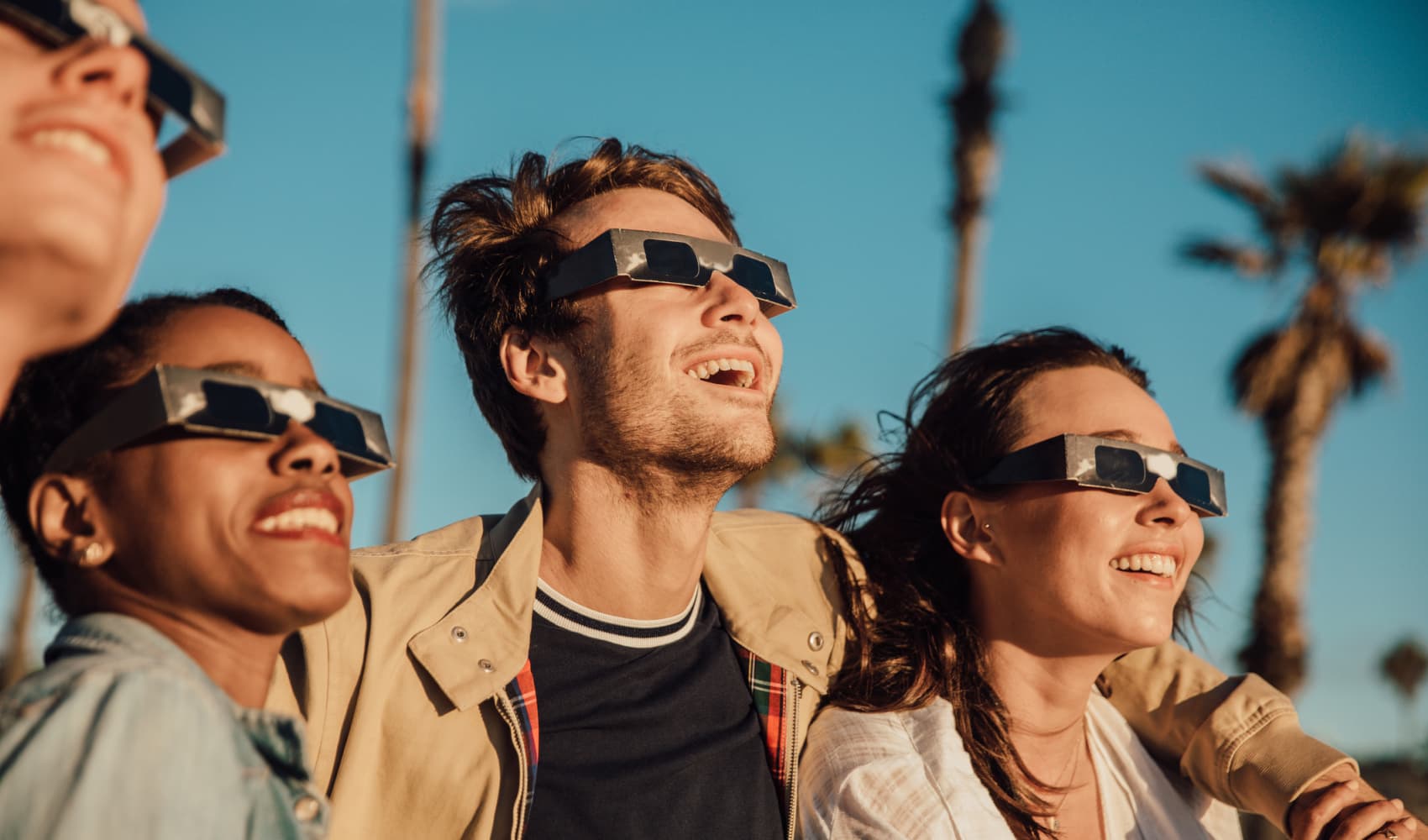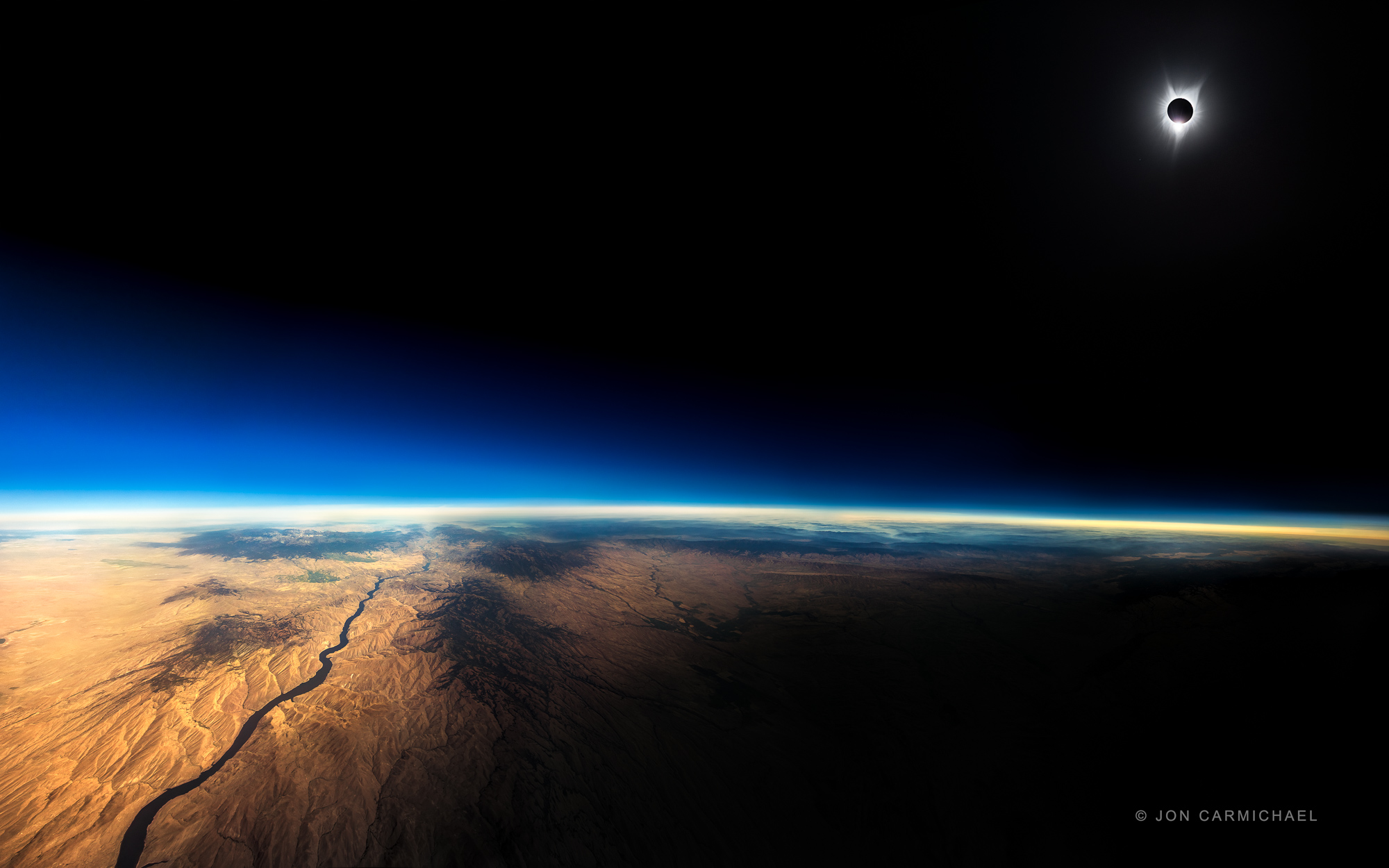Cheers erupted among crowds in Oregon and New Mexico on Saturday as a rare “ring of fire” eclipse of the sun that had millions across the Americas waiting with anticipation began putting on a spectacular show.
With the presence of cloudy skies, a NASA livestream of the phenomenon reported it in Eugene, Ore., shortly after 9:15 a.m. local time. This came over an hour after a partial eclipse set in.
For the small towns and cities along its narrow path, there was a mix of excitement, worries about the weather and concerns they'd be overwhelmed by visitors flocking to see the celestial event, also called an annular solar eclipse. Clouds and fog threatened to obscure the view of the eclipse in some western states, including California and Oregon.
As totality began in Eugene, oohs and ahs combined with groans of disappointment as the eclipse was intermittently visible, the sun’s light poking through the cloud cover from behind the moon only at times.
Get South Florida local news, weather forecasts and entertainment stories to your inbox. Sign up for NBC South Florida newsletters.
In New Mexico, the sky was crystal clear, giving tens of thousands of spectators an unfettered view. They got a double treat since the eclipse coincided with an international balloon fiesta that draws close to 100,000 spectators for early morning mass ascensions of hundreds of colorful hot air balloons.
Organizers gave out 80,000 pairs of viewing glasses Saturday morning. There were hoots, hollers and yelps as the ring formed and hot air balloon pilots used their propane burners to shoot flames upward.
Allan Hahn of Aurora, Colo., has attended the festival for 34 years, first as a crew member and then as a licensed balloon pilot. His balloon, Heaven Bound Too, was one of 72 selected for a special “glow” performance as skies darkened during the eclipse.
“It’s very exciting to be here and have the convergence of our love of flying with something very natural like an eclipse,” he said.
Unlike a total solar eclipse, the moon doesn’t completely cover the sun during a ring of fire eclipse. When the moon lines up between Earth and the sun, it leaves a bright, blazing border.
Saturday’s path: Oregon, Nevada, Utah, New Mexico and Texas in the U.S., with a sliver of California, Arizona and Colorado. Next: Mexico’s Yucatan Peninsula, Belize, Honduras, Nicaragua, Costa Rica, Panama, Colombia and Brazil. Much of the rest of the Western Hemisphere gets a partial eclipse.
The celestial event brought eclipse watchers from around the U.S. to remote corners of the country to try to get the best view possible. At Bryce Canyon national park in southern Utah tiny lights could be seen along a well known trail that snakes through a valley of red rock hoodoos as eclipse enthusiasts hit the trail before sunrise to stake out their preferred spots in nooks and crannies along the way.
“I just think it's one of those things that unites us all,” said John Edwards, a cancer drug developer who traveled alone across the country to try to watch the eclipse from Bryce Canyon. “I just think it's seeing these unique experiences that come rarely is what got me here. This is about as rare as it gets.”
Viewing all depends on clear skies — part of the U.S. path could see clouds. NASA and other groups livestreamed it.
Viewers on the East Coast were prepared to see less of the event — close to a quarter eclipse around midday in some areas, such as New York City — but were nonetheless geared up to watch the skies. In Maine, viewers expected to see only about 12% of the sun covered, but the Clark Telescope on the grounds of the Versant Power Astronomy Center at the University of Maine was open to the public.
The planetarium sold safety glasses for $2 to encourage safe viewing, said Shawn Laatsch, director of the Versant Power Astronomy and the Maynard Jordan Planetarium
“As the Moon passes between the Earth and the sun, it casts its shadow on our planet,” said Laatsch. “In a very real sense, solar eclipses are ‘made in the shade’ of the moon.”
Colombia’s Tatacoa desert was playing host to astronomers helping a group of visually impaired people experience the eclipse through raised maps and temperature changes as the moon blots out the sun.
At the Cancun Planetarium, young visitors built box projectors to indirectly and safely view the ring of fire. The ancient Maya — who called eclipses “broken sun” — may have used dark volcanic glass to protect their eyes, said archeologist Arturo Montero of Tepeyac University in Mexico City.
Towns and national parks in the path braced for huge throngs. Officials in Oregon's Klamath County urged residents to stock up on groceries and fill their gas tanks in case traffic backs up on its two-lane highways. Utah's Bryce Canyon expected Saturday to be the park's busiest day of the year, and officials at Balloon Fiesta Park in Albuquerque said it was likely a record crowd.
Brazil's Pedra da Boca state park, known for its rocky outcrops for climbing and rappelling was also expecting crowds.
The entire eclipse — from the moment the moon starts to obscure the sun until it’s back to normal — is 2 1/2 to three hours at any given spot. The ring of fire portion lasts from three to five minutes, depending on location.
Next April, a total solar eclipse will crisscross the U.S. in the opposite direction. That one will begin in Mexico and go from Texas to New England before ending in eastern Canada.
The next ring of fire eclipse is in October next year at the southernmost tip of South America. Antarctica gets one in 2026. It will be 2039 before another ring of fire is visible in the U.S., and Alaska will be the only state in its direct path.
____
Oyan reported from Albuquerque, New Mexico. AP reporters Patrick Whittle in Portland, Maine; Susan Montoya Bryan in Albuquerque, New Mexico; Brady McCombs in Garfield County, Utah; Astrid Suarez in Bogota, Colombia; María Verza in Cancun, Mexico; and Mauricio Savarese in Sao Paulo, Brazil, contributed to this report.



